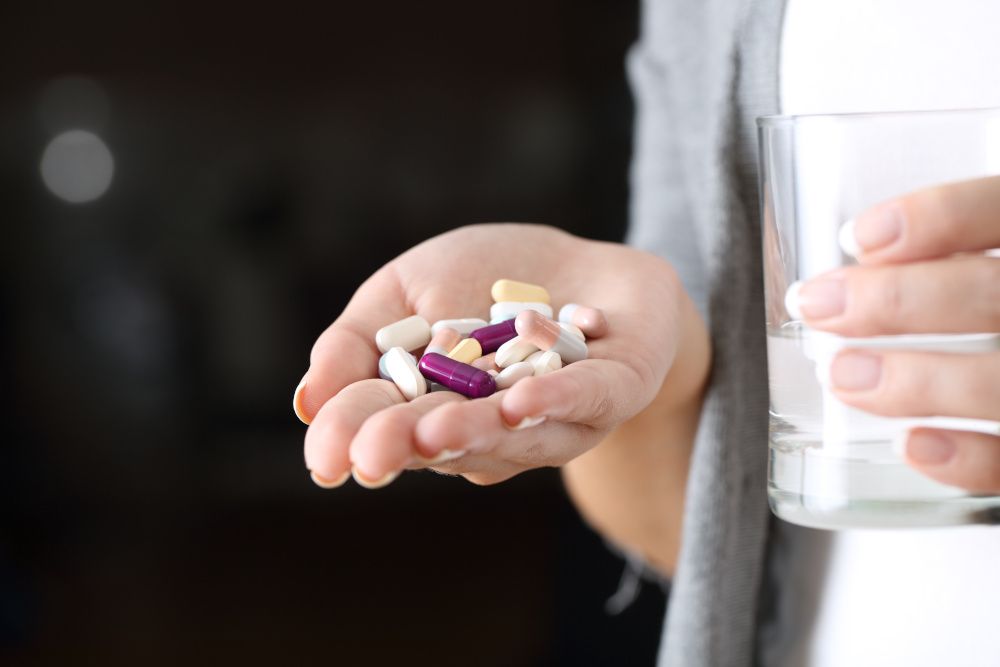Less Is More: How reducing pill burden wins customers
Supplement brands that reduce the number of pills consumers need to take daily have a long-term, competitive advantage.
Have you ever seen an advertisement that makes a supplement sound just great—until you find out it requires you to consume six large capsules per day? We believe that asking or requiring your consumers to commit to taking multiple pills each day is a sure way to lose them—quickly. After all, your target consumer is already likely taking other supplements as well, whether it’s a multivitamin, condition-specific support formula (e.g., stress management), and/or single-ingredient supplements for specific needs (e.g., vitamin C for winter immune support). Adding to that pill burden risks driving customers away.
Consumer compliance should be top of mind when blueprinting a new product. The goal is to deliver a scientifically proven product that is simplest to take—and whose effects last for most of the day rather than peaking and diminishing. By simplifying the delivery and reducing the supplement dose, brands make it easier for consumers to remember to adhere to a supplement regimen, resulting in improved compliance.
But how do we know that a reduced dose of a supplement is as efficacious as a higher dose? This can be shown through human pharmacokinetic studies.
Once Daily, All Day Long
One way to reduce dosage is to eliminate the synthetic excipients typically used to add to the physical mass of a tablet or capsule. These excipients would otherwise increase the number and/or size of the pills necessary for the consumer to take in order to gain the benefits the product claims to provide.
Improving the effectiveness of supplements that struggle with solubility, absorption, or distribution in the body typically increases their bioavailability, which in turn may allow for a reduction in dosage. These improvements can be accomplished through several methods, such as reducing particle size, altering the formulation, or utilizing nanotechnology. By implementing these approaches, supplement bioavailability can be enhanced, resulting in a lower dose being required to achieve the same, or even greater, plasma concentration and pharmacological effect compared to the traditional formulation. This approach improves consumer compliance by increasing convenience. It also sometimes results in improved cost.
Extended-release products are formulated to reduce the need for frequent dosing by regulating the speed at which the active ingredient is absorbed. This offers consumers a range of benefits, including greater convenience, improved adherence, and more effective outcomes. By slowing down the rate of absorption, the concentration of the actives in the blood remains more stable over time, allowing for less frequent consumption of larger doses. As a result, desirable active levels can be sustained for longer periods. And as we stated earlier, the frequency of dosing and consumer adherence to a regimen are inversely related.
Creating a sustained release usually involves cutting-edge techniques to enhance the solubility of active ingredients without the use of solvents. Additionally, microenvironmental pH systems and solid dispersion techniques, as well as hydrophilic and hydrophobic matrix systems, are used to achieve low dose and extended release of actives. A combination of advanced technologies can be employed to reduce the number of additives while still achieving the desired results of extended release and lower dosages.
This all sounds solid—in theory. But beware of companies that proclaim a product’s high bioavailability without providing the pharmacokinetic studies to demonstrate this action. And, more importantly, remember that clinical trials on these extended-release or reduce-dosed formulas formulations are necessary to substantiate efficacy at the extended release or lower doses.
Let’s use turmeric as an example. One turmeric may use a solid dispersion technology and an advanced mechanism to disperse the active extract at a molecular level. As a result, it produces a highly soluble solid solution that provides better bioavailability with a smaller dosage than an unformulated turmeric extract.
Remember: half of the success equation lies is developing a dietary supplement ingredient whose dose is proven by clinical research. The other half of that equation is keeping in mind the consumer’s need to reduce the compliance load so that shoppers keep buying your product.
About the Author
Rajat Shah, co-founder of Nutriventia, uses her leadership experience and technical expertise to lead the Nutriventia brand for Inventia Healthcare Ltd. She holds a master’s in computer science and engineering, and an MBA in marketing and strategy. She has continued to advance her knowledge of pharmacology and medicine at Harvard Medical School. At the age of 22, she designed and commercialized a profiling solution for researchers, which was extensively used by universities in the United States.
Mars partners with suppliers like ADM to bring regeneratively grown ingredients to pet food
November 25th 2024Mars (Franklin, TN) is collaborating with partners and suppliers like ADM, The Anderson, Inc., Riceland Foods, and Soil and Water Outcomes Fund through its Royal Canin USA and Petcare U.S. Inc. brands to provide financial incentives to farmers to implement regenerative agricultural practices.
Senate Committee has released the text of 2024 Farm Bill, with changes to hemp regulations
November 19th 2024The U.S. Senate Committee on Agriculture, Nutrition, & Forestry has introduced the Rural Prosperity and Food Security Act, which will serve as the Senate’s draft for the 2024 Farm Bill.
